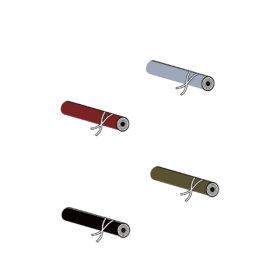NATURAL WHETSTONES: SUSTAINABLE & ELEVATED CRAFTSMANSHIP EXPERIENCE
Japanese natural whetstones, with their rich history, unique geographical origin, and sustainable excavation methods, are more than just sharpening tools. They provide unmatched sharpening and deep connections between user and tools.
INTRODUCTION
Traditional Japanese craftsmanship reflects a profound respect for nature and its meticulous utilization. Among the various natural resources harnessed in Japanese culture, the natural grindstones, or Tennen Toishi, are exceptionally noteworthy for their use in blade sharpening.

HISTORY & GEOGRAPHY OF JAPANESE NATURAL WHETSTONES
The history of natural grindstones in Japan dates back to the Jomon period (around 14,000-300 BCE), signifying their long-standing cultural importance. The grindstones were initially utilized for domestic sharpening purposes such as processing food and crafting tools. Over time, with the advancement of metallurgy and the introduction of the sword-making tradition, these grindstones evolved into an indispensable tool for swordsmiths.
Japanese natural grindstones are unique in composition due to their geographical origins. The main sources are the mines of Kyoto and Ohira, renowned for their superior quality stones. These mines offer a vast array of grindstones, each with varying grit sizes and compositions, facilitating diverse sharpening applications. Kyoto is known for its Narutaki and Ozuku stones, and Ohira is famed for its Suita and Strata stones. These regions, with their unique geological conditions, create stones known for their unmatched hardness, grit finesss, and water-retaining capabilities.

EXCAVATION OF WHETSTONES
The excavation process of these stones is both complex and painstaking, reflective of the traditional reverence for natural resources. Rather than using heavy machinery, miners often handpick the stones, preserving the natural structure and preventing unnecessary breakage. It’s a sustainable process, intending to maintain the ecological balance while meeting the demands for these exceptional stones.
BENEFITS OF NATURAL WHETSTONES
their utilization in sharpening applications. The use of these stones elevates knife sharpening from a simple task to a meditative process. Unlike synthetic stones, natural whetstones have a varied grit structure, which allows them to offer a more refined, razor-sharp edge while maintaining the knife’s integrity. This is particularly beneficial for Japanese knives, which are often single-beveled and require a very specific edge geometry for optimal performance.
Natural grindstones can conform to the blade’s unique curvature, offering a more customized and even sharpening. Their hardness allows for prolonged usage without significant reduction in size, making them a sustainable choice. Plus, they are water-based, eliminating the need for oil or lubricants that can contaminate the blade and the environment.

MORE THAN JUST SHARPENING TOOLS
Japanese culinary professionals and swordsmen depend on natural whetstones to achieve both Kasumi and Hongasumi finishes. The Kasumi finish, a hallmark of a well-sharpened blade, presents an aesthetic mix of a misty, hazy edge and a polished shiny surface. Not merely an aesthetic, but also a visual cue of the blade’s superior sharpness and balanced tempering. Hongasumi takes this even further with the electric definitions of each blade component which acts as a signal to the buyer of a knife’s high pedigree.
More than just functional tools, each stone, with its unique grain pattern, texture, and form, can be viewed as an artwork of nature. Using these stones demands patience, attention, and respect for the tool and the process which in turn enhances the user’s relationship with their tools.
In the current age of sustainability the use of natural grindstones aligns with eco-friendly practices. The extraction of these stones does not involve harmful chemicals or industrial processes, and their long lifespan reduces the need for frequent replacement.
Japanese natural grindstones, with their rich history, unique geographical origin, and sustainable excavation methods, are more than just sharpening tools. They provide both unmatched sharpening and a fostering og deep connections between user and tools. Using these stones is an investment in a more sustainable future and an elevated craftsmanship experience.
SUMMARY
The essay explores the history, geography, excavation methods, and benefits of Japanese natural grindstones, or Tennen Toishi. Originating from the Jomon period, these grindstones evolved into essential tools for swordsmiths, owing to the unique geological conditions of Kyoto and Ohira regions. The excavation process respects nature by handpicking stones, preserving their structure, and maintaining ecological balance.
The principal focus of the essay is on the benefits of sharpening with these natural whetstones. They are preferred over synthetic stones due to their varied grit structure that offers a more refined, razor-sharp edge while maintaining the integrity of the blade. They are especially beneficial for sharpening Japanese knives, known for their specific edge geometry. The hardness and water-retaining capabilities of these stones prolong their usage and eliminate the need for oil or lubricants.
Natural grindstones also provide a unique Kasumi finish, a mix of a hazy edge and a polished shiny surface, highly esteemed by culinary professionals and swordsmen. The use of these stones reflects the philosophy of ‘Wabi-Sabi,’ embracing the beauty in imperfection and transience, and aligns with modern sustainability practices.

 KULUR ROLL
KULUR ROLL COOKING
COOKING



